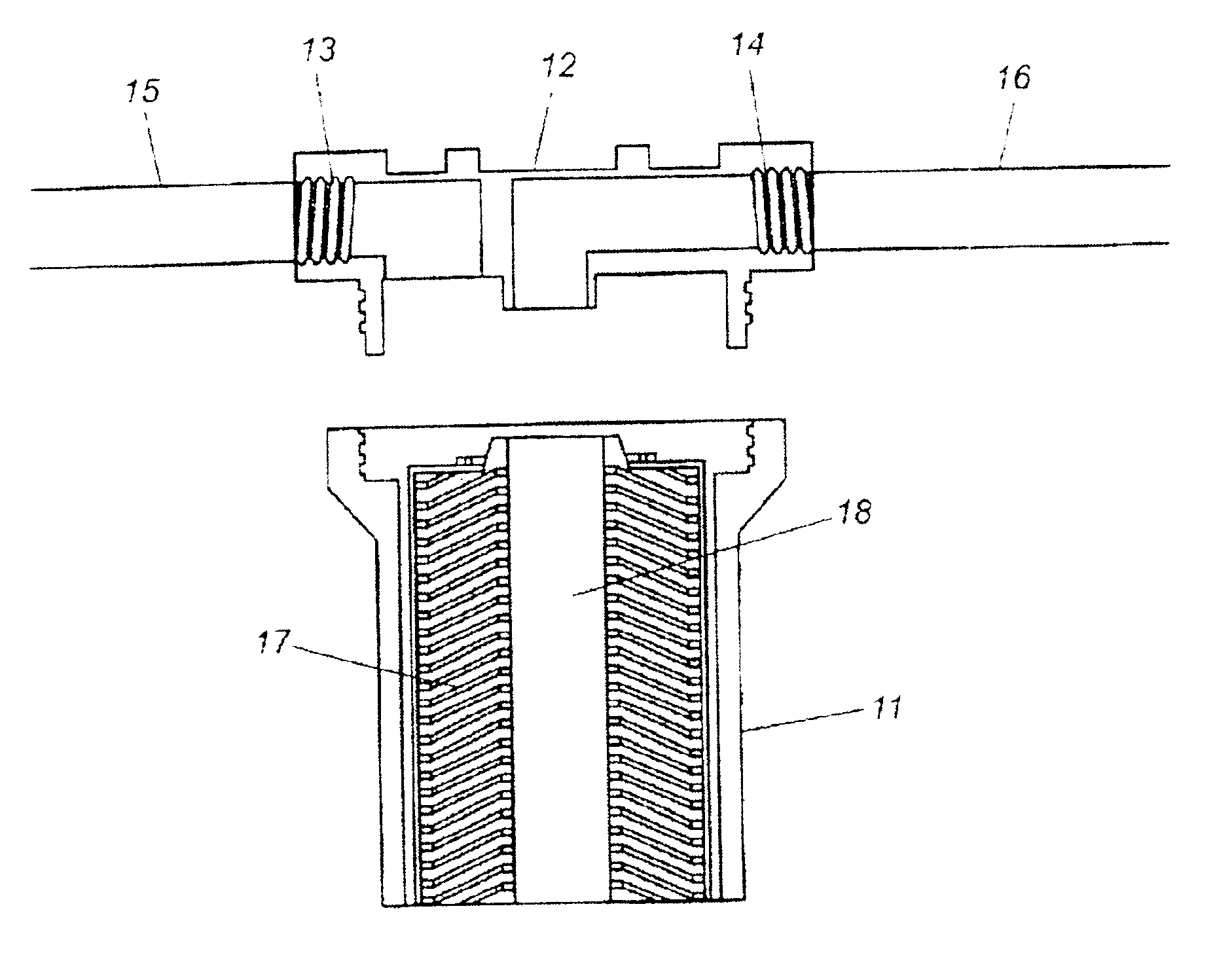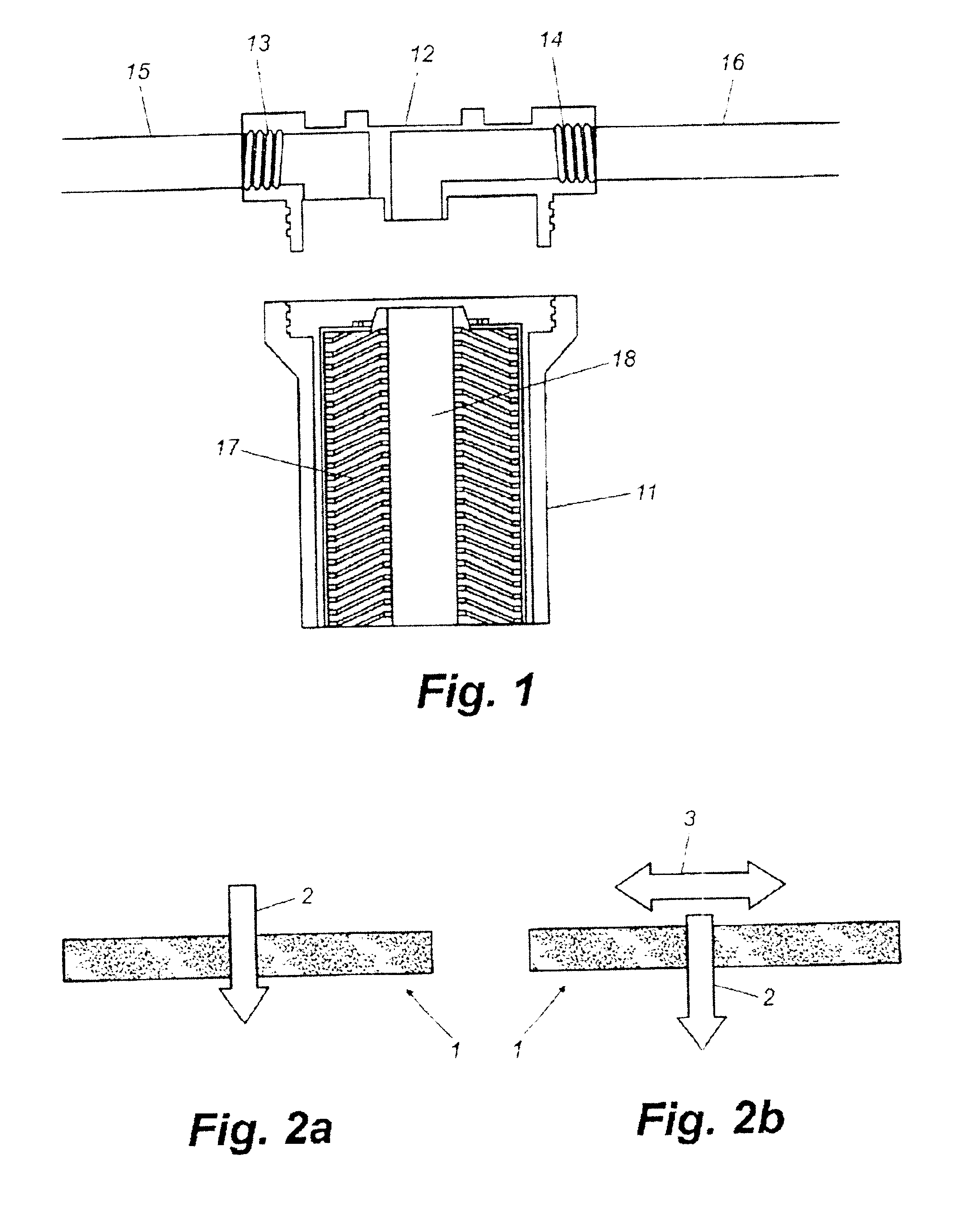Process for preparing reactive compositions for fluid treatment
a technology of reactive compositions and fluid treatment, which is applied in the direction of other chemical processes, multi-stage water/sewage treatment, separation processes, etc., can solve the problems of high cost, energy inefficiency, and/or significant technical know-how and sophistication of fluid purification technologies, and many advanced fluid purification technologies have limited application in residential points of entry (poe, low cost)
- Summary
- Abstract
- Description
- Claims
- Application Information
AI Technical Summary
Benefits of technology
Problems solved by technology
Method used
Image
Examples
example 2
The composite prepared in Example 1 may be used to reduce a water soluble chlorine species such as hypochlorous acid in an oxidized state to a chlorine species in a reduced state (choride). The following water parameters were used for testing: total dissolved solids 280-290 mg / L; total organic carbon 1.1 mg / L, pH=7.8-8.0, and chlorine 2.1 mg / L. This composite reduced greater than 90% of the hypochlorous acid. The composite maintained this function for more than 125 gallons of the test water.
example 3
The filter prepared in Example 1 may be challenged by exposing it to tap water that is filtered with activated carbon and then seeded with 2.3.times.10.sup.8 colony forming units per liter of K. Terringena bacteria and 1.0.times.10.sup.7 plaque forming units per liter of MS2. The seeded water is passed through the filter block 17 at a flow rate of approximately 2 liters / minute for 3 minutes, followed by collection of a 500 ml effluent sample. K. Terringena may be assayed on m-Endo agar plates by membrane filtration procedure, while the MS2 virus may be assayed by similar standard methods.
example 4
A cylindrical filter block 17 of the shape shown in FIG. 1 may be prepared with a material composition of approximately 42.5% calcined bauxite obtained from CE Minerals, approximately 42.5% GAC obtained from KX Industries, and approximately 15% thermoplastic binder material selected from one or more of the thermoplastics described above. This bauxite includes a mineral mixture that contains varying amounts of, silicates and metal oxides including aluminum, titanium, iron, or combinations thereof. The material may then be extruded at a temperature that provides a uniform mixture of bauxite, GAC, and thermoplastic binder. After extrusion and final preparations a fluid containing a reactive silane (APS) is passed through the composite. The cylindrical or toroidally shaped block 17 is approximately 9.8 inches in length, with an outer diameter of approximately 2.5 inches and an inner diameter (the bore 18) of approximately 1.25 inches. This shape filter fits into a standard water filtrat...
PUM
| Property | Measurement | Unit |
|---|---|---|
| resistance | aaaaa | aaaaa |
| resistance | aaaaa | aaaaa |
| pore size | aaaaa | aaaaa |
Abstract
Description
Claims
Application Information
 Login to View More
Login to View More - R&D
- Intellectual Property
- Life Sciences
- Materials
- Tech Scout
- Unparalleled Data Quality
- Higher Quality Content
- 60% Fewer Hallucinations
Browse by: Latest US Patents, China's latest patents, Technical Efficacy Thesaurus, Application Domain, Technology Topic, Popular Technical Reports.
© 2025 PatSnap. All rights reserved.Legal|Privacy policy|Modern Slavery Act Transparency Statement|Sitemap|About US| Contact US: help@patsnap.com


